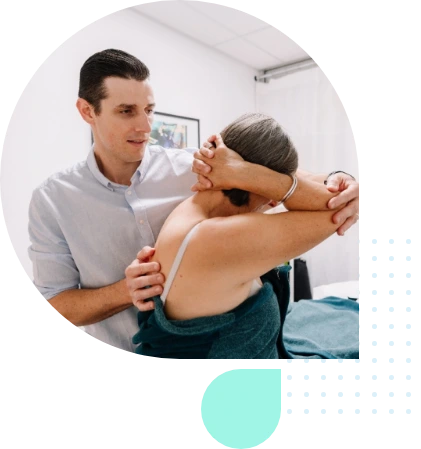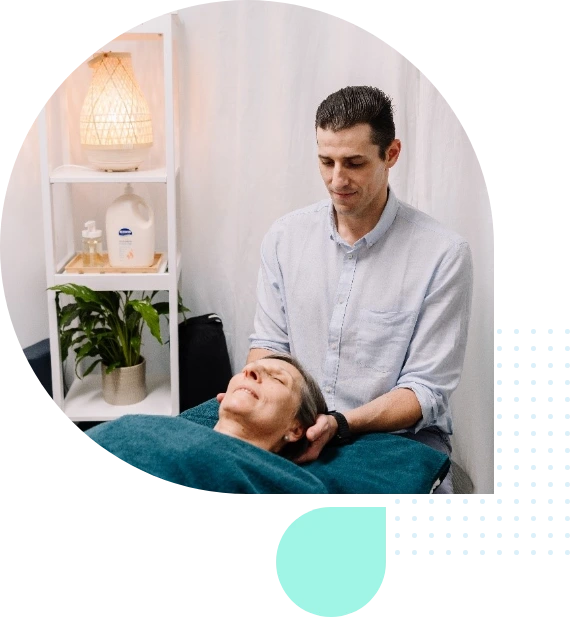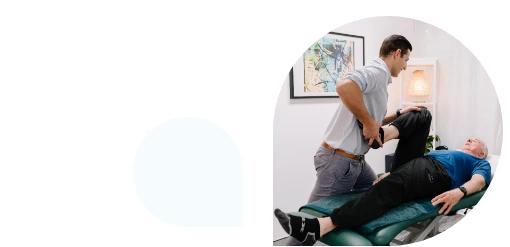At Osteophi, we take pride in offering Osteopathy, a hands-on approach grounded in clinical understanding and patient-centred care. By focusing on the connection between the body’s structure and function, we aim to support natural healing processes, helping you move better and feel better.
If you’re searching for an osteopath on the Sunshine Coast, contact us today to find out how we can support you.
What is Osteopathy?
Osteopathy is a hands-on therapy that addresses the musculoskeletal system to promote overall health and well-being. By understanding how the body’s systems work together, osteopaths provide personalised treatments that aim to assist with pain management, improve mobility, and support long-term recovery.

Who Can Benefit from Osteopathy?
Osteopathy may support the management of back pain, neck pain, shoulder pain, and elbow pain, Osteopathy may also help with general mobility challenges amongst patients of all ages. Whether you are recovering from an injury, dealing with chronic pain, or simply seeking to enhance your overall movement and health, osteopathy treatment may help to support you in achieving your goals.
Contact us to discuss if osteopathy may be suitable for your needs.
Common Techniques Provided by Osteopaths
-
Soft tissue techniques
Gentle hands-on approaches like myofascial release and trigger point therapy aim to reduce muscle tension and support flexibility, potentially easing discomfort and mobility.
-
Joint mobilisation
Joint mobilisations involve gentle joint movements that aim to improve range of motion and reduce stiffness. These techniques may also assist with the management of joint discomfort.
-
Manipulation
Joint manipulation involves high-velocity, low-amplitude thrusts to specific joints, aiming to enhance joint mobility. These treatments are performed when clinically indicated and with patient consent.
-
Dry needling
Dry needling involves using an acupuncture needle in the muscle near a ‘trigger point.’ This technique aims to achieve a local twitch response, which may assist in managing musculoskeletal discomfort.
-
Myofascial cupping
Myofascial cupping involves applying a glass or plastic cup to the skin with reduced pressure to stretch superficial tissues. This technique is often used to promote muscle relaxation.
-
Exercise prescription
Individually tailored exercise programs aim to strengthen and stretch target areas of the body, supporting awareness and recovery goals.
What to Expect During Your First Appointment
Your initial consultation at Osteophi is designed to understand your unique needs and create a personalised treatment plan. It begins with a detailed assessment of your medical history and lifestyle, followed by a physical examination to evaluate your posture, mobility, and musculoskeletal health. Based on this evaluation, your osteopath will develop a tailored treatment plan to address your specific concerns and goals.
Tailored Treatment Plans
At Osteophi, we understand that every individual’s journey to health is unique. Our treatment plans may include a combination of manual therapy techniques, gentle manipulations to improve circulation and joint function, and exercises to support long-term wellness. We also provide education on how to prevent recurring issues, empowering you to take control of your health.

FAQs
An osteopath may use hands-on techniques to diagnose, treat, and resolve conditions related to the musculoskeletal system. They aim to restore balance in the body, alleviate pain, and enhance mobility while supporting overall health.
Osteopathy is suitable for people of all ages, from children to the elderly. It is especially beneficial for those experiencing issues like back pain, neck pain, joint stiffness, or reduced mobility. Osteopaths may assist patients recovering from injuries or managing symptoms of chronic conditions.
Some private health insurance providers in Australia may include osteopathy services under extras policies. Please note that coverage for osteopathy services varies. Check with your private health insurer for specific details.
Osteopathy, chiropractic, and physiotherapy all focus on musculoskeletal health, but their approaches differ. Osteopathy emphasises a holistic health and hands-on treatment philosophy, focusing on the interconnectedness of the body. Chiropractic care primarily targets spinal alignment and nervous system health, while physiotherapy combines manual techniques with exercise-based rehabilitation to restore movement and function. Each approach provides different benefits, with suitability depending on individual needs and preferences.

